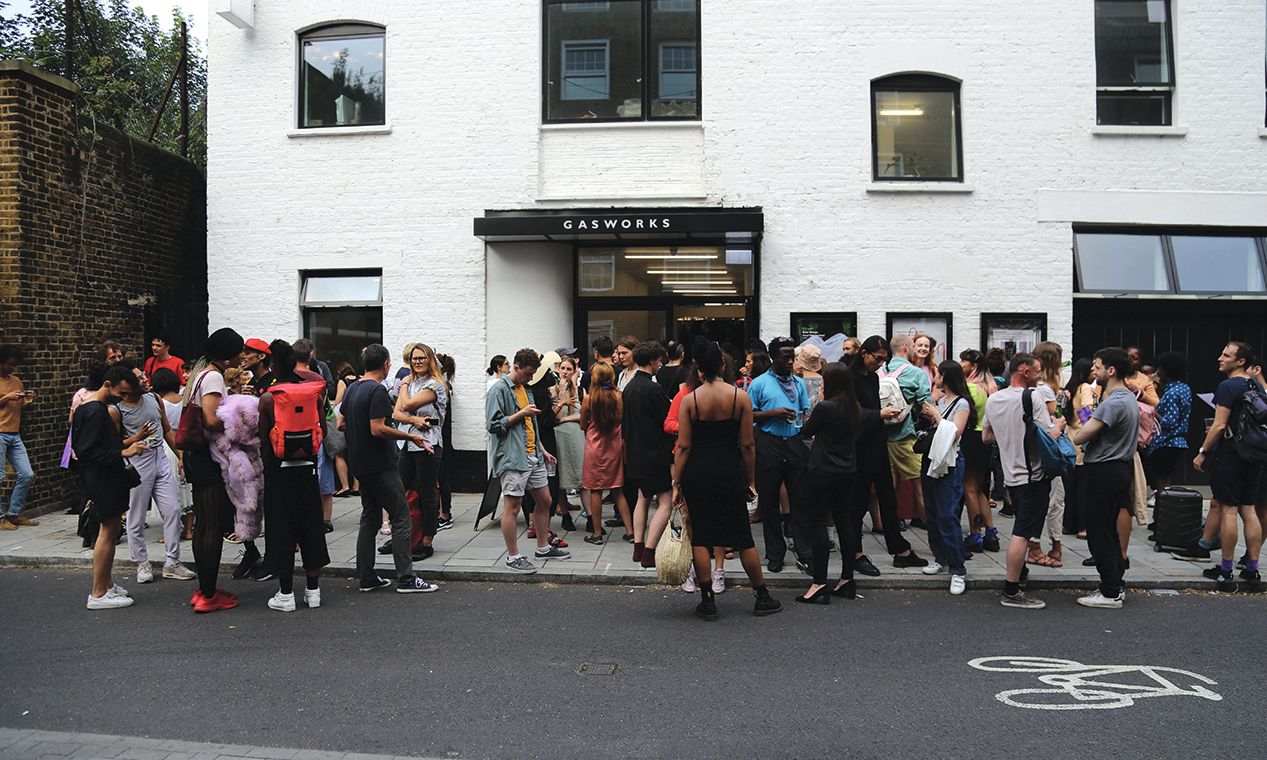Lighting a flame: since 1994, Gasworks has supported more than 600 artists from 80 countries, with its studios and residencies, as well as reaching out to the local community
Courtesy of Gasworks
All hail Gasworks! Ibrahim Mahama, Sin Wai Kin, Tania Bruguera, Sonia Boyce and Subodh Gupta are among the wide and often illustrious community who have benefited from the early support of this south London powerhouse, which celebrates its 30th birthday this year. Modest in size but huge in impact, Gasworks has now attracted a devoted following, whether through its international residencies, subsidised studios, commissioned exhibitions or workshop exchanges, which, over the past three decades, have involved more than 600 artists from 80 countries.
This global reach has been further extended by Gasworks being at the centre of the mycelium-like international Triangle Network, which feeds into its various programmes via a wider ecosystem of artists, workshops and visual arts organisations stretching from Colombia to Bangladesh, from Kenya to China. Right from the get-go this was a trailblazing organisation, where international did not just mean Europe and North America. As Joy Gregory, one of its earlier artists, puts it, “Gasworks is a very tiny tip of a huge iceberg, underneath which there are contacts across every continent in the world.”
“The invitation to do a residency at the Gasworks was literally life-changing for me,” says Lisa Brice, who came from South Africa in 1998. “It brought me to London, and I am still here 26 years later!” It was also through a Triangle workshop that Brice was introduced to Trinidad “which became a big part of my life and resulted in close and lasting friendships with a community of artists that remain today.”
Similarly, Sin, nominated for the Turner Prize in 2022, declares that their time as Gasworks studio artist “was a transformative period in my practice”, while Ghanaian Mahama, who is currently covering the Brutalist façade of London’s Barbican Centre in vast swathes of magenta fabric, describes his 2013 Gasworks residency as “fantastic and eye opening”.
Internationalism and putting the artist community at the centre of things has always been embedded in Gasworks’s DNA. By the time he founded the organisation in 1994, the philanthropist and collector Robert Loder had already set up the beginnings of the Triangle Network with the sculptor Anthony Caro, with workshops in the US and initiatives across Southern Africa, most notably the Bag Factory studio collective in Johannesburg. Boyce, who won the Golden lion at the 2022 Venice Biennale, was one of the first artists invited by Loder to occupy a Gasworks studio, and she remembers its early ethos of artist autonomy and collective support: “You’d turn up at the door, be handed a screwdriver and told to get involved; it countered the narrative of the artist as solo genius,” she says
This convivial, can-do spirit is also confirmed by Hew Locke, who describes his time at Gasworks in the early 2000s as "my university and point of connection with the global art world", adding that, "what was important was the conversation and the discussion of ideas".
Thirty years on, Gasworks has formalised its procedures, but its outlook remains resolutely global and a family feeling still prevails. A registered charity, it now owns its 19th-century warehouse building just behind the Oval cricket ground. Here, nine subsidised studios on five-year leases are offered for London-based artists, while four are for the rolling programme of international residencies, which now last three months and always end with informal open studios. Visiting artists from Argentina, Thailand, Brazil and Spain are currently in situ. Everyone eats in the communal kitchen, and an additional house to accommodate residency artists was purchased in 2020. Other significant strands are a lively participation programme involving the local community and a well-appointed gallery specifically dedicated to commissioning artists to make their first major UK exhibition. Recent shows have included the textile sculptures and performances of Ukrainian-born Anna Perach and a multi-sensory installation by Trevor Yeung, who is representing Hong Kong at this year’s Venice Biennale.
“The reason why Gasworks is still here is because, just as when it first started, it continues to serve, support and respond to artists, creating an environment where they can produce, meet, think and do what they have to do; there have never been any hierarchies,” says Alessio Antoniolli, who started as an intern in 1998 and has just recently stepped down after 18 years as director. His successor Robert Leckie is also no stranger to the place, having previously done a seven-year stint as curator and head of programmes. Leckie agrees that “Gasworks is wonderfully dynamic; you are dealing directly with artists from all over the world who are working through ideas and developing new projects. It’s at the very forefront of diversity and cultural exchange, and that’s the reason why I wanted to come back,” he says. And that’s also why so many of us keep coming back, too. Happy birthday, Gasworks.
• All the Lovers; Editions from 30 Years of Gasworks, David Zwirner Gallery, 31 May-2 June
• A new series of Anniversary Editions by Gasworks Alumni available at Gasworks online shop from 17 May

